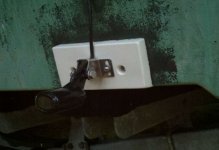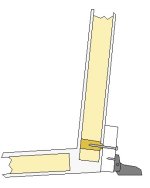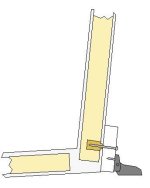dread":61j6bf6j said:
Their response was " It is a tight screw very short and does not penetrate the hull."
Well maybe not to the inside of the boat, but it very well may be long enough to penetrate into the transom core.
dread":61j6bf6j said:
That response was after the boat was back in the water and I am concerned that they didn't want to haul it out again. Should I lose sleep over this?
Their response wouldn't ease my worries, personally, without removing the fastener and getting a look for myself. The way I look at it, if there is transom damage it will be some time from now, and I doubt they would be covering the repair. Granted, I'm on the "I like to know it's right so I can relax" end of the spectrum, and it's not like your boat is going to melt instantly as-is.
But what I would do? First, I wouldn't bother going back to the same place. I know others might (and not saying my way is the right/best way), but I would figure that they've already shown me they're not terribly concerned, and I would trust myself to care more about the future of the boat and to do a better job.
I would haul the boat as soon as reasonably possible, and check it out for myself. I would remove the screws and see just what was there. If for some reason the transom is solid glass there (or the glass outer skin is thick enough), and so the screw only goes into glass, well then it could be replaced with just some sealant. However my guess is that it goes into core (mine did).
For sealing core below the waterline at the bottom of the transom, I would probably use one of a few approaches.
1) Overdrill/fill/re-mount
Overdrill the holes (make them larger), ream out even a bit more core (i.e. undercut the holes), coat inside of hole with neat epoxy, then fill with thickened epoxy. Chisel off excess while it's in the green stage. Then re-drill correct size hole and bed screw with sealant.
2) Mount block (starboard, fiberglass, other) and then screw transducers to block. (The block gives you a surface to mount any future/different transducers to.)
2a) Mount block similar to #1, then screw transducers to it.
2b) (This is what I'm doing now) Mount block with Weld-Mount fasteners (no holes into boat this way) and then screw transducers to block.
3) If going with #2, you'd want to take care of the current holes first (since they will be disused). You could use the "overdrill/fill" from #1, or, if you are really paranoid (I am :wink

you might also patch (cover) them with fiberglass cloth/epoxy after filling them. Note that only the most paranoid do this last step, and that simply properly doing the overdrill/fill routine is going to be really, really good.
I'm mid-process doing this on my boat (removing and reinstalling transducers put on by original owner/shop). Luckily, the boat was always stored on a lift in a building, so even though the screws were just screwed into the core with a "bedding" of silicone caulk (! :amgry), there was no wet core. I'm going back with method 2b after filling/glassing the original holes (since the mounting block will cover them, I will do a tidy job with new gelcoat, but it won't have to be Sistine Chapel quality, aesthetically. If your boat is bottom painted, then gelcoat really isn't necessary (paint will shield epoxy from UV).
Sunbeam :hot





